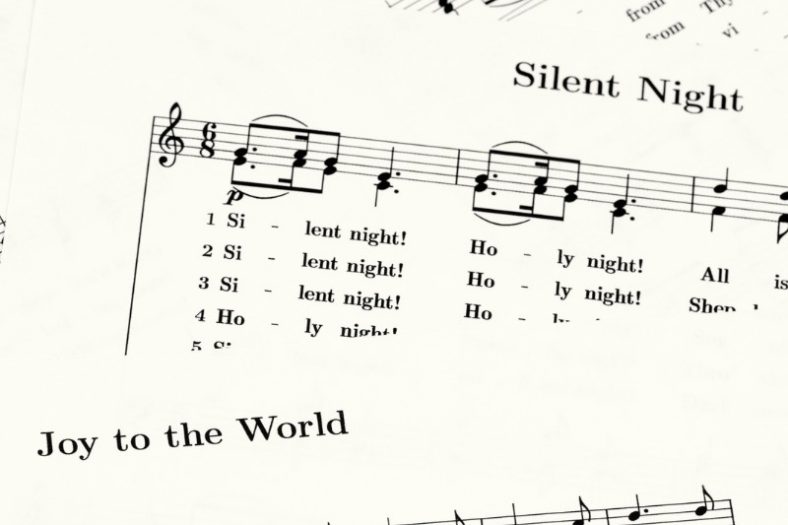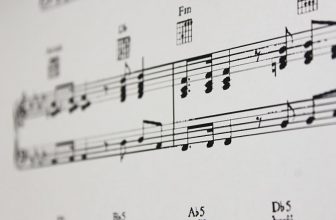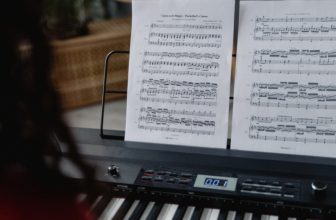What’s The Difference Between 3/4 And 6/8 Time?

The difference between 3/4 and 6/8 time is that, while both time signatures fit seamlessly into the same measure, they have a different feel. Whereas 3/4 time has three strong beats per measure, 6/8 time has two strong beats per measure. They may look the same, but they’re approached differently.
In Western musical notation, a time signature refers to how many beats are contained in each measure. The most common type of time signature is 4/4, which indicates that each measure contains four quarter notes.
To get the feel of a time signature, it’s always a good idea to “sing” it. A song in 4/4 time, for example, can be sung as “1-2-3-4, 1-2-3-4,” with each beat 1 indicating the start of a new measure.
Contents
Why is it so hard to tell the difference between a 3/4 and a 6/8 time signature?
Many people mistakenly believe that there is no real difference between 3/4 and 6/8 time, as both fit seamlessly into the same measure. And to be honest, both time signatures are kind of the same from a purely mathematical standpoint.
Imagine that you’re playing a song in 3/4 that contains eighth notes. Such a song can be rhythmically sung as “1-and-2-and-3-and.” Assuming that both songs have the same tempo (i.e., the same beats per minute), that’s not so different from singing a song in 6/8 time, as it goes “1-2-3-4-5-6.”
So, it’s the difference between these two time signatures just a case of replacing the “and” for a nominal “2, 4, and 6?” Or is there something else that sets both apart?
The crucial difference between 3/4 and 6/8 time
What truly makes a song in 3/4 time different from a song in 6/8 is its feel. Both times are approached differently by musicians because of the way they are accentuated.
In Western music, an accent is an emphasis or stress placed on a set of beats via dynamics. In other words, the strong beats in a 3/4 time signature are not the same as the strong beats in a 6/8 time signature.
When a song is in 3/4 time, it means that it has three strong beats per measure. Each of the three quarter notes in the measure is accentuated by the musician, giving way to a waltz-like groove.
In the case of a song in 6/8 time, there are only two strong beats per measure. The song doesn’t feel like a waltz, but rather like a pendulum, as only the beats 1 and 4 are accentuated in each measure.
To interiorize the differences in feel between the two time signatures, why don’t you sing them? Try to snap your fingers to each of the strong beats in both time signatures, represented below in bold:
- 3/4 time signature: 1–2–3, 1–2–3, 1–2–3, 1–2–3.
- 6/8 time signature: 1-2-3-4-5-6, 1-2-3-4-5-6, 1-2-3-4-5-6, 1-2-3-4-5-6.
To go even further, try to sing the 6/8 time signature again while comparing it to a 3/4 time signature that features eighth notes, as in “1-and-2-and-3-and, 1-and-2-and-3-and.” This should give you an idea of how it’s possible to approach the same set of eighth notes in a completely different manner simply by changing the accents in each measure.
Examples of songs in 3/4 and 6/8 time
Once you have interiorized these two different accentuation models, you should be able to tell a song that is in 3/4 time apart from a song in 6/8 time. Here are two popular examples of both:
The classic waltz-sounding “My Favorite Things” is a perfect example of how a song in 3/4 features three strong beats per measure. Notice how, by humming “1–2–3” to the beat, you can accompany Andrews’s singing to perfection.
In the case of The Animals’ version of “House of the Rising Sun,” humming “1–2–3” to the beat doesn’t sound right. Instead, one needs to sing “1-2-3-4-5-6″ to accurately accompany the band. The trick is to sing the beat 1 and 4 loudly while ghosting the beats in between—just like a drummer or guitarist would.
Conclusion
Now that you’ve learned the difference between 3/4 and 6/8 time, you should be able to quickly interpret a song in each of the two time signatures correctly (even if you haven’t heard it yet). The key is to interiorize the underlying rhythm of each of the two by understanding how musical accentuation applies to both cases.





